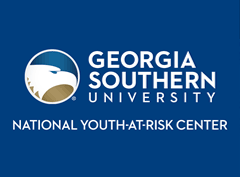An ESOL/Elementary School Approach to Preventing Youth-At-Risk
Focused Area
Improving the Educational Setting of Students in ESOL Programs
Relevance to Focused Area
In order to improve the educational setting for our ESOL students we have devised a five step approach to supporting our students through quality research-based instruction, family/student relationship building, teacher collaboration, administrative support, and scaffold learning opportunities. With this model we have found that our students, parents, and teachers feel more equipped to face the challenges of our increasingly demanding educational environment
Primary Strand
Family & Community
Relevance to Primary Strand
Research shows that English Language Learners are language learners for life. Additional research shows that students that struggle academically and/or do not build strong relationships are more likely to become youth-at-risk. To increase our students’ future success rate, we have found that by building relationships with all stakeholders in a student’s life we gain information about each student which in turn helps us to meet their individual emotional and academic needs. Building relationships with family, community, and school allows the students to feel supported, appreciated, and valued.
Brief Program Description
Want to gain professional knowledge in the area of building a strong elementary school-wide ESOL program that leads English Language Learners down the road of academic success? We will present the five steps of our successful ESOL program that includes relationship building, data-driven teacher collaboration, scaffolding the rigorous Common-Core curriculum, gaining administrative buy-in, and using research supported, and brain-based teaching strategies.
Summary
Providing students with a successful elementary educational experience enables English Language Learners to continue down the road of success. We have developed and are implementing a 5 step approach to English Language for Speakers of Other Languages (ESOL) that provides this positive experience while decreasing the risk of our second language learners becoming at-risk youth. Studies show that English Language Learners are English Language Learners for life! In order to prepare our students for a life of learning, we have found 5 key components to a sound ESOL program that makes for a successful learning experience in the early grades.
Program participants will gain an understanding of and how to implement the steps of building relationships with all stakeholders, successfully collaborating with teachers, gaining administrative program support, using research supported, brain-based teaching strategies, and scaffolding the rigorous Common-Core curriculum based on student data. Take home learning opportunities will include knowledge on how to help English Language Learners and their families become a part of the school community, how to support teaching and learning in the regular content areas through providing teachers data and research-based teaching strategies, ways to support the ELs through scaffolding of curriculum, methods to share information with administrative staff to gain support for your ESOL program, as well as actual teaching methods that are brain-based and research driven.
Evidence
The data we use to determine the success of our ESOL program is the ACCESS test from the WIDA Consortium and the Georgia Department of Education CCRPI Student Performance Goals for ESOL Teachers.
Based on an analysis of our last two years ACCESS data 10 to 15 % of our Direct served ESOL students exit the ESOL program.
Our data showed that 100% of our students made measureable improvement in the area of language proficiency.
Format
Individual Presentation
Biographical Sketch
Lisa Homann has her MAT in ESL and her Educational Specialist degree in Brain-Based Teaching and Learning with a concentration in Leadership. She began her ESL teaching career at Fairleigh Dickinson University, in Rutherford NJ. Following that she was an ESL teacher at Lindbergh Elementary School in Palisades Park, NJ for 14 years. Upon moving to Georgia, she began teaching ESOL for Gwinnett County Public Schools in 2004. In addition to her teaching position, she is a member of the GCPS ESOL Endorsement Faculty which offers graduate- level ESOL certification courses. She has presented for the GCPS Numeracy Institute and provided county-wide Math staff development with a focus on English Language Learners. She has taught Reading Instruction for ELLs for GCPS staff. Just recently she presented at Kennesaw State University on the subject of Math and English Learners.
Nancy Hurst has been teaching for seventeen years in the Gwinnett County Public Schools, Georgia school system. She has taught all seventeen years in Title 1, economically disadvantaged schools. As a classroom teacher, she taught both first and second grades. These classes varied from English Language Learners to Gifted Education students. This is her sixth year as an English for Speakers of Other Languages teacher for grades kindergarten, first, and second. Her ESOL teaching models have included both inclusion and pull-out models. Her advanced degrees include a MSEd in Reading and Literacy, and an Educational Specialist degree in Brain-Based Teaching and Teacher Leadership. She also holds an endorsement in ESOL teaching.
Start Date
10-23-2016 10:00 AM
End Date
10-23-2016 11:00 AM
Recommended Citation
Homann, Lisa and Hurst, Nancy, "An ESOL/Elementary School Approach to Preventing Youth-At-Risk" (2016). National Youth-At-Risk Conference, West (2015-2017). 22.
https://digitalcommons.georgiasouthern.edu/nyar_vegas/2016/poster/22
An ESOL/Elementary School Approach to Preventing Youth-At-Risk
Want to gain professional knowledge in the area of building a strong elementary school-wide ESOL program that leads English Language Learners down the road of academic success? We will present the five steps of our successful ESOL program that includes relationship building, data-driven teacher collaboration, scaffolding the rigorous Common-Core curriculum, gaining administrative buy-in, and using research supported, and brain-based teaching strategies.
